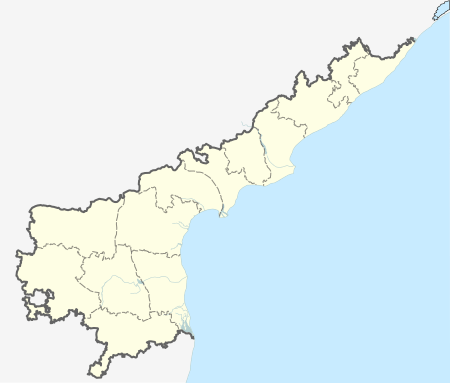Vasishtha dynasty

The Vasishtha (IAST: Vāsiṣṭha) dynasty ruled in the Kalinga region of eastern India in the fifth century CE. Their territory included parts of the present-day northern Andhra Pradesh. They were one of the three minor dynasties that emerged after the decline of the Gupta power in the area, the other two being the Matharas and the Pitrbhaktas.
Genealogy
The Vasishtha king Anantavarman is known from his Siripuram and Srungavarapukota copper-plate inscriptions. These epigraphs describe him as a son of Maharaja Prabhanjanavarman, and a grandson of Maharaja Gunavarman.[1]
Thus, three rulers of the dynasty are known:[2]
- Maharaja Gunavarman
- Maharaja Prabhanjanavarman
- Parameshvara Anantavarman
Territory
The Siripuram and Srungavarapukota inscriptions of Anantavarman were issued from Devapura and Pishtapura respectively. In Siripuram inscription, his grandfather Gunavarman is described as the lord of Devapura. The city was presumably the capital of a region called Devarashtra (within Kalinga), which Anantavarman inherited from his ancestors.[1] Devarashtra is identified as the present-day Yelamanchili taluka.[3]
According to the Allahabad Pillar inscription, the Gupta emperor Samudragupta defeated the kings of Devarashtra and Pishtapura during his southern invasion. It appears that Gunavarman became a sovereign of Devarashtra after the decline of the Gupta rule in the region.[3]
Religion
Unlike the Vaishnavite Matharas, Anantavarman was a Shaivite. His inscriptions describe him as parama-maheshvara (devotee of Shiva).[3]
Inscriptions
The following copper-plate inscriptions of the Vasishtha kings are known:[4][5]
| Find spot | Issued by | Issued from | Purpose |
|---|---|---|---|
| Siripuram (in Srikakulam district) | Anantavarman | Devapura | Grant of village Tontapara (possibly modern Totada) |
| Srungavarapukota | Anantavarman | Pishtapura | Grant of the village Kindeppa |
All the records are in Sanskrit language, written in a southern variety of the Brahmi script.[6]
References
- 1 2 Snigdha Tripathy 1997, p. 9.
- ↑ Dilip Kumar Ganguly 1975, p. 219.
- 1 2 3 Snigdha Tripathy 1997, p. 10.
- ↑ Snigdha Tripathy 1997, p. xi, 11-14.
- ↑ Dilip Kumar Ganguly 1975, p. 227.
- ↑ Snigdha Tripathy 1997, pp. 17-18.
Bibliography
- Dilip Kumar Ganguly (1975). Historical Geography and Dynastic History of Orissa, Up to the Rise of the Imperial Gaṅgas. Punthi Pustak. OCLC 2376032.
- Snigdha Tripathy (1997). Inscriptions of Orissa. I - Circa 5th-8th centuries A.D. Indian Council of Historical Research and Motilal Banarsidass. ISBN 978-81-208-1077-8.